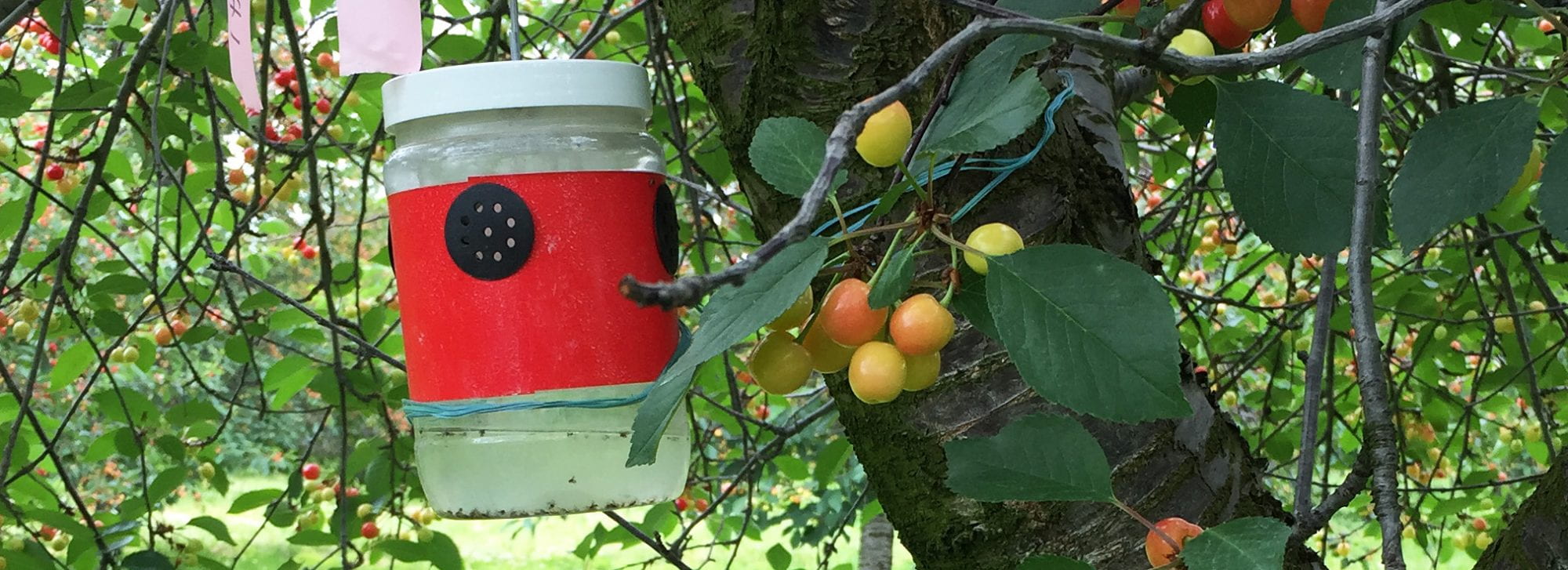SWD populations are building up. Of the 44 locations where traps are being monitored for SWD, 29 (66%) have reported SWD trap catch. Over half of these locations have caught SWD two weeks in a row with SWD numbers caught now in the teens. Sixteen locations in Albany, Cayuga, Genesee, Niagara, Ontario, Rensselaer, Schuyler, Ulster, Wayne and Yates Counties are at sustained trap catch—two weeks in a row. Monitoring for first catch of SWD is nearing completion for 2015 and traps are being pulled from the monitoring network.
SWD populations are increasing in neighboring states and provinces, too. Reports from Ontario Province and Maine, Massachusetts, and Rhode Island align with our findings in New York State. If you are in affected counties, take measures to protect your fruit crops – insecticide programs, sampling fruit, sanitation, and postharvest refrigeration will all assist in protecting susceptible fruit.
Be proactive with your customers. Let them know about SWD and what you are doing to combat it. Tell them to refrigerate the fruit they buy.
Reports of SWD eggs and larvae are coming in from our research and Extension colleagues. You can check for fruit infestation using a salt floatation test. Follow these methods:
- Prepare salt water – 1 cup salt per gallon of water.
- Collect perfect fruit. Fruit should be sale-able, not soft or overripe. (25 large – strawberry, plum; 50 medium – large-fruited blueberry or blackberry; 75 small – small-fruited blueberry or raspberry.)
- Put fruit in a gallon size re-sealable plastic bag.
- Pour salt water into the bag to cover the fruit.
- Mark bag with field code and date.
- For a quick check in the field – after 15 minutes, hold the bag up to light. This helps to see the larvae that emerge from the fruit into the salt water.
- For a more thorough examination – after 15 minutes, pour the fruit and salt solution into a shallow tray and use a piece of wire mesh screen to hold the fruit down or sieve it to separate the larvae in the salt water from the fruit. Larvae are more easily seen against a dark, black background. The better the lighting, the easier it will be to see the larvae, so plan to be in a well-lit area with minimal glare.
NOTE - A light infestation, or one with mainly 1st instar larvae, will be difficult to see with the naked eye. Use a magnifier, loop, hand lens, optivisor, or dissecting microscope for easier viewing. Another approach is to split the fruit sample into two parts – do salt floatation on one part and hold the other part in a container at room temperature and do salt floatation on it after three days.
First instar larvae are < 1 mm long. Third instar, fully grown larvae are 2-3 mm long. SWD larvae (Drosophila suzukii) are indistinguishable from larvae of the common vinegar fly (D. melanogaster.)
A video on salt floatation in the field, produced by Peerbolt Consulting, Pacific Northwest, can be found at: http://www.berriesnw.com/videos/baggieTest/2010SaltBagTest.htm
If an infestation is found in your planting, clean pick all ripening, ripe and overripe fruit into clear re-sealable bags. Kill the SWD in it by freezing it or solarizing it and dispose of it. Pick up or step on and crush any fruit that has dropped to the ground. Protect the unripe fruit with insecticide sprays applied at 5 to 7 day intervals. This practice will protect the green and unripe fruit from the SWD that would have developed in the infested fruit in the planting and dropped on the ground.
If your berry planting is small and can be framed over, consider the use of exclusion netting to protect fruit next year. This may be worth the investment to preclude the need for routine insecticide applications.

